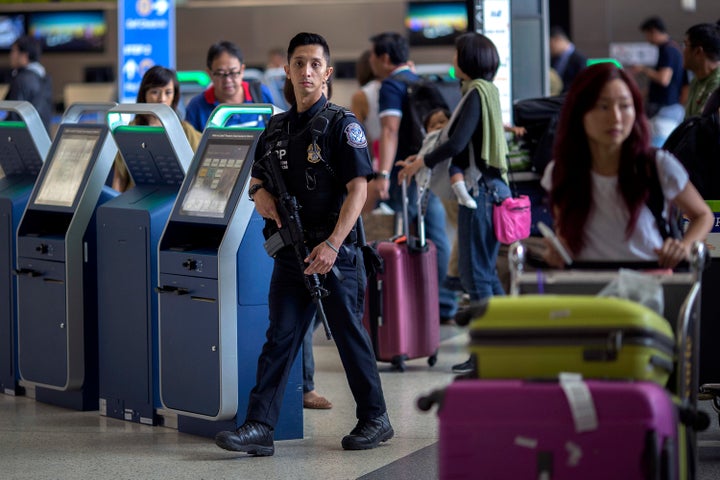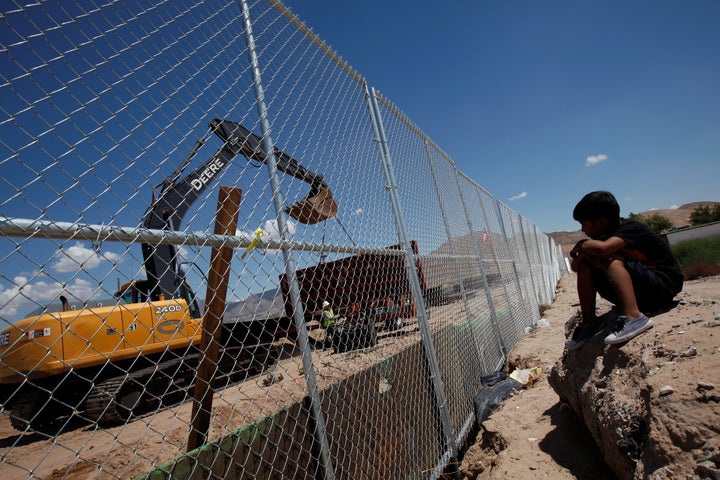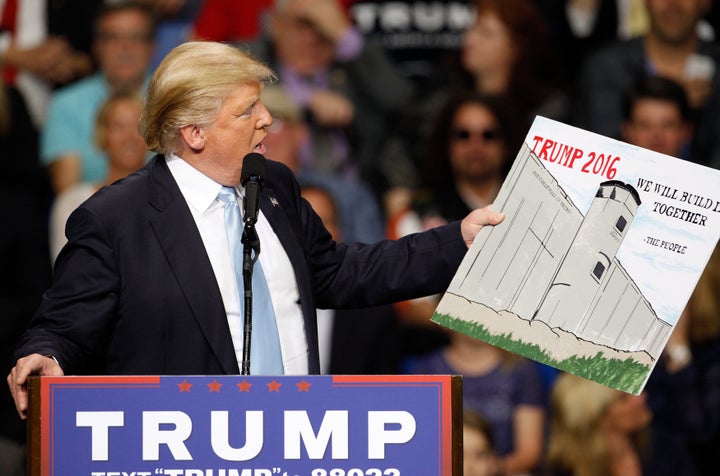U.S. immigration policy is inextricably linked with national security and border control policies. But that wasn’t always the case. The Sept. 11, 2001 terrorist attacks prompted a major shift in the way the country handles immigration, creating new government bodies and tightening restrictions on who is and isn’t allowed in.
“The 9/11 hijackers entered the country with ― a fact that immediately linked immigration with terrorism and national security,” explained the Migration Policy Institute in a 2011 fact sheet.
Here are some of the key ways immigration has changed since 9/11:

New Government Bodies And Policies
Arguably, the most significant difference is that the Department of Homeland Security didn’t exist before 9/11. Formed in November 2002 with the passing of the Homeland Security Act, the agency replaced the Immigration and Naturalization Service and became responsible for enforcing national security and protecting the U.S. from terrorism.
The three main bodies created within the DHS consist of Customs and Border Protection (CBP), Immigration and Customs Enforcement (ICE) and U.S. Citizenship and Immigration Services (USCIS).
The main duties they fulfill in the post-9/11 era include screening and collecting data on international travelers, additional screenings and interviews of people of certain nationalities, and sharing information with other countries.
The U.S. began setting aside “huge funding for immigration enforcing, the creation of DHS, creating new and robust databases which were nonexistent,” Muzaffar Chishti, a director at Migration Policy Institute, told The Huffington Post. “We have an entry-exit system, where we fingerprint everyone who enters and we track people in many airports when they leave country. We also track every foreign student.”
“Today, if a local cop tracks you down for making a wrong left turn in downtown Atlanta, he’s going to know your entire immigration history within seconds,” Chishti added.
These tactics were extended to the nearly 2,000-mile border between the U.S. and Mexico, where many undocumented immigrants have crossed since the 1990s, according to the MPI report. “A mix of billions of dollars in new manpower, infrastructure, equipment and new or amended policies” went toward protecting the southern border, the report said, and the number of undocumented immigrants found to be crossing it declined.

Immigration Reform
While national security became a centerpiece of U.S. immigration policy after 9/11, undocumented immigrants’ entry into the country has remained a constant political issue.
Congress hasn’t been able to agree on bipartisan immigration reform ever since the attacks. Former U.S. President George W. Bush and former Mexican President Vicente Fox announced a bipartisan framework for comprehensive reform just five days before 9/11, but the proposal never resurfaced.
“The fact that we did not even consider picking up any reform until 2007 demonstrated that there was no political space to do it. We were only thinking about how to improve national security,” Chishti said.
“"Today, if a local cop tracks you down for making a wrong left turn in downtown Atlanta, he’s going to know your entire immigration history within seconds."”
- Muzaffar Chishti, Migration Policy Institute
Refugee Resettlement
The immigration debate in the U.S. has shifted to some degree in the last several years as the country considers whether it has a moral duty to welcome refugees ― and if so, how to ensure that they don’t pose a national security threat.
The U.S. has admitted more than 800,000 refugees since the 9/11 attacks, if this year’s figures are taken into account. Only three have been arrested on terrorism charges, according to MPI.
“The threat to the U.S. homeland from refugees has been relatively low,” Seth Jones, director of the International Security and Defense Policy Center at the RAND Corporation, testified to Congress in 2015. “Almost none of the major terrorist plots since 9/11 have involved refugees.”
Refugee screening ― which became prevalent in the years following 9/11 ― is as intense as it is lengthy, and entering the U.S. as a refugee is actually the least likely avenue for a radicalized individual to pursue, Chishti says. Refugee screening typically takes about two years, and requires that “the FBI, Department of Homeland Security, State Department, and national intelligence agencies independently check refugees’ biometric data against security databases,” MPI said.
Concerns about refugees have intensified as the world experiences the largest mass migration movement since World War II, largely due to wars in countries like Syria and Iraq.
Facing criticism that the U.S. was letting European and Middle Eastern nations bear much of the burden of absorbing refugees, President Barack Obama increased the U.S. refugee resettlement quota for the 2016 fiscal year to 85,000, setting aside 10,000 spots just for Syrians. The quota is expected to hit 100,000 people in 2017.
Some lambasted Obama for not taking in enough Syrian refugees ― Germany, in contrast, welcomed 1 million people last year ― while others opposed receiving any refugees at all, citing fears that they could be radicalized and pose a national security threat.
The administration successfully reached its goal of resettling 10,000 Syrians this fiscal year, but the debate over refugees is unlikely to be resolved anytime soon.

What Now?
Immigration has featured prominently in the U.S. presidential elections thanks to Republican presidential nominee Donald Trump, who went from calling Mexican immigrants “rapists” to demanding that the U.S. ban entry to all Muslims in the wake of the terrorist attacks in Paris last November. Building a wall on the U.S.-Mexico border is another one of Trump’s mainstay policy proposals.
“He did announce his candidacy on the backdrop of immigration and it was mostly about illegal immigration, basically saying that immigration is out of control, that we don’t know who’s here, who’s coming, as we have lost control of our borders,” Chishti said. “In many ways, this has nothing to do with 9/11.”
Yet if Trump were to reduce legal immigration into the U.S., as he’s implied with his proposed Muslim ban, it would represent “the first time in recent history that any political party has called for any such reduction,” according to Chishti. And that’s very much tied to national security fears.
What Trump will actually do if he wins the presidency is still unclear.
Democratic presidential nominee Hillary Clinton, meanwhile, argues for comprehensive immigration reform and a path to citizenship for the 11 million undocumented immigrants in the country. She’s also taken the opportunity to lambast Trump’s proposals to ban Muslims and build a border wall. Still, some immigrant rights activists are wary of Clinton and critical of Obama’s legacy of deportations.

